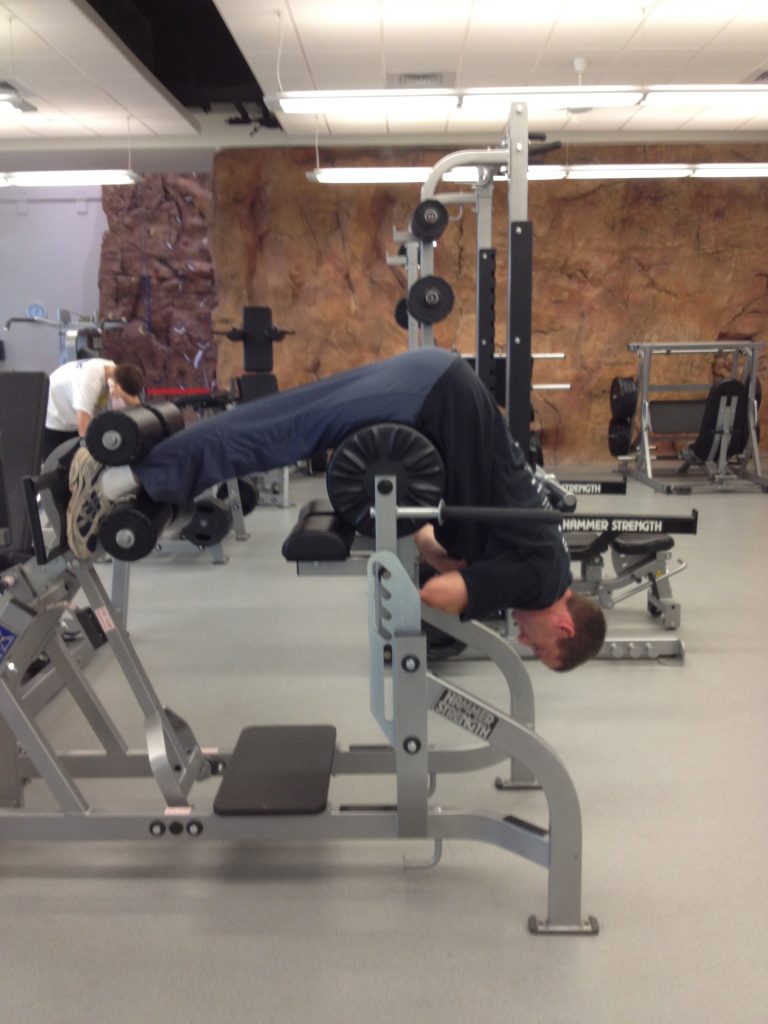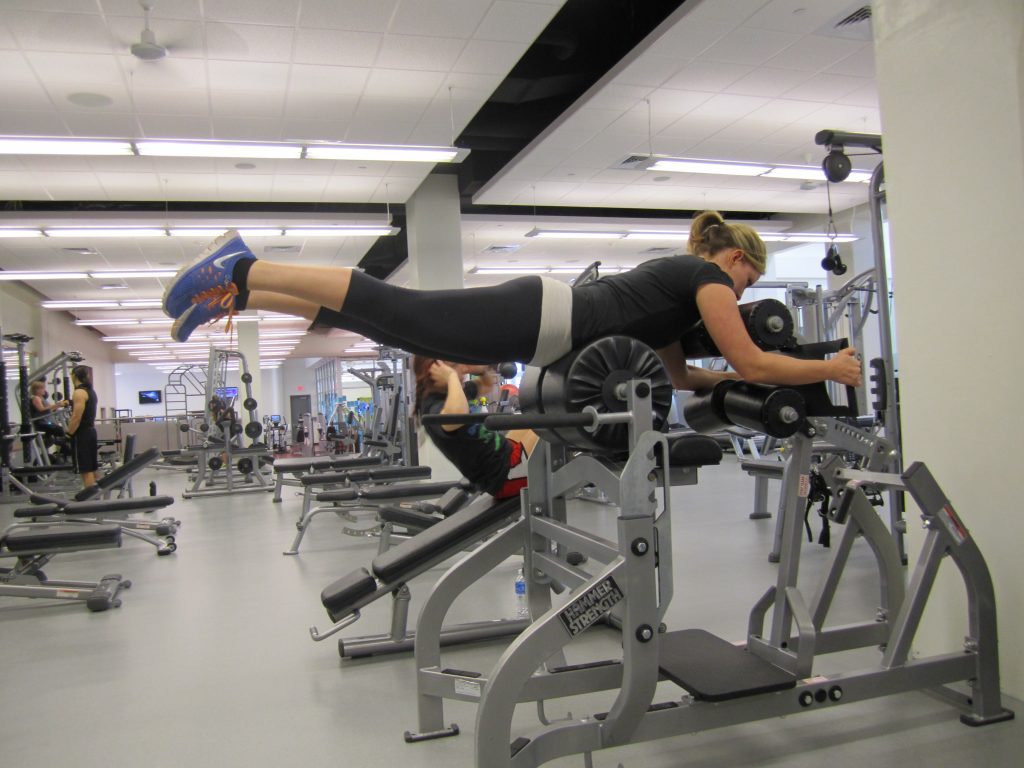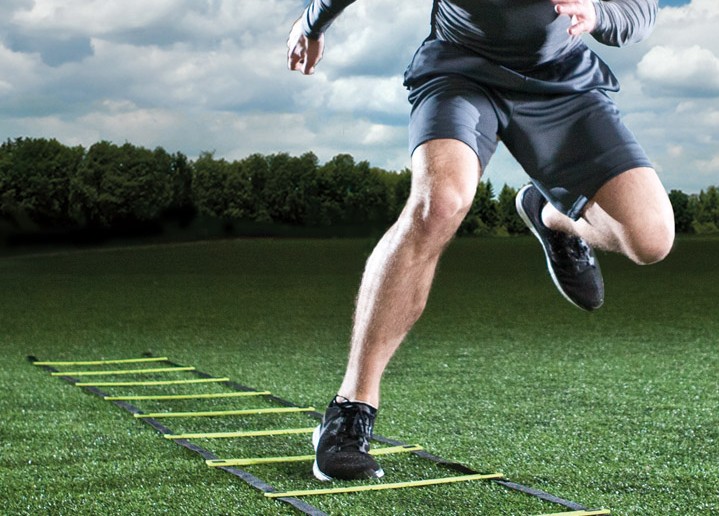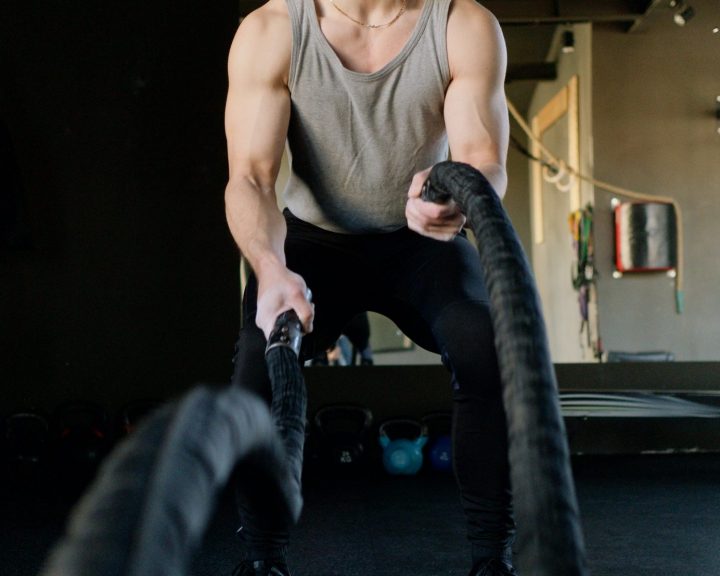The hyperextension exercise and the reverse hyperextension exercise are both mainstays in many strength training programs. The hyperextension involves laying face down in the hyperextension bench, flexing forward from the hip until there is a 90 degree angle at the hip, and then extending the hip until the upper body is parallel to the ground.

I personally don’t like the name “hyperextension.” The name implies raising the upper body to a point that is past parallel to the ground, which is not how we coach the exercise. For this reason I prefer to call these “back extensions.”
The reverse hyperextension exercise involves laying face down on the hyperextension bench so that the legs are dangling off (instead of the upper body). The legs are then lifted behind the body until they are parallel to the ground.

Both exercises are meant to stress the muscles of the lower back, hamstrings, and glutes. Reverse hyperextensons gained popularity about twenty years ago in powerlifting circles as they are considered to be less stressful to the lower back but still very effective
In a 2019 study, Lawrence et al studied both exercises. In this study, researchers studied twenty recreationally trained individuals. Subjects did two sets of ten reps on back extensions and on reverse hypers. On the back extensions, subjects performed them with a 45 pound plate. On the reverse hypers the resistance plus leg mass plus equipment weight was equivalent to what was lifted on the back extensions.
Results:
- Back extensions generated significantly greater muscle activation of the biceps femoris, erector spinae, and gluteus maximus.
- Back extensions had a greater range of motion than the reverse hyperextensions at the lumbar spine.
- Reverse hyperextensions had a greater range of motion at the hip than the back extensions.
- The reverse hyperextension created greater moments at the lower back than back extensions.
What do these results mean exactly? If your focus is on using either exercise for hamstring or glute development, then it looks like the back extensions may be more effective than the reverse hyperextension. The greater moment at the lumbar spine may also be an issue for individuals with a lower back injury.
Now, some cautions with these results. First, when it comes to the revese hypers the authors talk about a pendulum effect, this means that some subjects swung the weight in the bottom position, the authors mention that the amount of swing was not controlled. Clearly this is not good strength and conditioning practice in a coaching situation.
Also, I coach the back extensions to keep the chest out and shoulders back. The focus is moving from the athlete’s hip when performing it. The authors talk about subjects not having experience with the exercises, so it’s unclear if optimal technique was practiced on the exercise.
Truth is I like both exercises as supplementary hip hinge movements. These are great exercises to finish a lower body focused training session. I think that both still have a role in a strength and conditioning program.
Both of these exercises are typically done for a higher volume, usually three sets of 12-20 repetitions per set. They can be overloaded by holding weight across the chest (in the case of back raises) or holding weight between the feet (reverse hyperextensions). Back raises start with using a plate which can be held across the chest, you can eventually progress to heavy dumbbells and even holding a barbell while performing the exercise. When using a barbell, the barbell is typically held in the crook of the arms a lot like a Zercher squat. Some reverse hyperextension benches come with with ankle pads and can be loaded up with weight.
The challenge is in using these exercises in a team strength and conditioning setting where you may have 30-50 athletes in the weight room at one time. It’s not practical to have 15-25 of these benches (each of these can cost in excess of $2500!) and if you only have one then it’s a huge bottleneck. One way to get around this is the use dumbbell or bench press flat benches to perform the exercises.
When using this method to perform back raises, a partner will have to secure the athlete’s feet. But, the exercise is performed exactly the same, just the range of motion is limited by the height of the bench . When performing reverse hypers, the athlete holds onto the bench and allows their legs and hips to be off, performing the exercise the same way just the range of motion is limited.
Lawrence, M.A., Chin, A., and Swanson, B.T. (2019). Biomechanical comparison of the reverse hyperextension machine and the hyperextension exercise. Journal of Strength and Conditioning Research, 33(8), 2053-2056.
(Revised 5/17/22)




